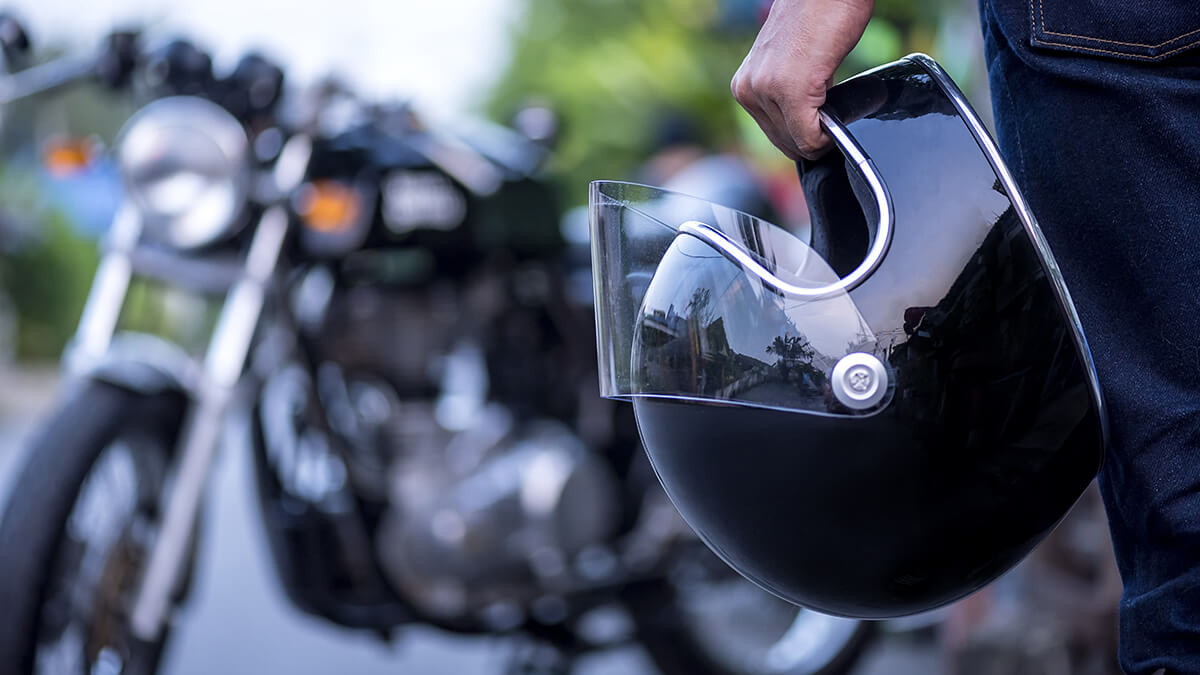
Motorcycle safety tips

Riding a motorcycle, whether you’re a new or seasoned rider, can be challenging and comes with a lot of responsibility. Although you’re not in a vehicle, the rules of the road still apply to you just like every other driver on the road. We put together some helpful tips that will make you feel more prepared before you ride, and while you’re out on the open road!
Know the law
Regulations regarding the operation of motorcycles and use of safety gear, such as helmets, may differ in different parts of the country. Check with local law enforcement or the area Department of Motor Vehicles to find out what the laws are where you will be riding. And make sure that you’re following all applicable laws.
Be prepared
Make sure that you and your bike are properly licensed before you hit the road. Get insurance so you and your passengers are properly protected. And be aware of the current road conditions — don’t take unnecessary risks if the conditions are unfavorable. Be extra cautious on wet pavement as oils from other vehicles and moisture can make pavement very slick. Read your owner’s manual, and make sure you have it and a small tool kit with you when you’re riding.
Gear up
Every time you ride, be sure to wear protective gear in case of an accident. A helmet, eye protection, a sturdy jacket, long pants, boots and gloves are your best bet for optimum protection.
Stand out
Brightly colored clothing can help you stand out in traffic to make other drivers aware of you. While you’re riding, use your headlight, avoid other vehicles’ blind spots, drive carefully and be prepared to use your horn.
Check it out
Be sure to check that your bike is running properly before hitting the road. Always check mirrors, tire pressure, fuel level, gauges and suspension. Follow the recommended service schedule for your bike, and be sure to have all repairs made by an authorized service provider.
On the road
Distance yourself. Always be sure to leave enough space between you and the vehicle in front of you. That might be your only way out if the car behind you fails to stop in time. Give yourself reaction time and protect your safe zone. When turning, start on the outside of the curve to give yourself additional visibility ahead and increase your safe space.
Position yourself. When riding, the left wheel track of a 4-wheeled vehicle should be your main lane position. However, when following another vehicle or coming to a stop, moving to the right of the lane will make you more conspicuous and create a space for you to exit if you need to.
Ride defensively. Three-quarters of all motorcycle accidents involve collisions with cars. Most of these occur because the driver of the car didn’t see the motorcycle. That’s why it pays to be extra aware of what other drivers on the road are doing. Scan around you – in front, to the side and behind. Make a mental note of what’s around you and be prepared to react. Watch for cars waiting to turn left across your path at intersections, as this is a common problem for motorcyclists.
Ride smart
Be sharp. Alcohol, drugs and fatigue can all impair your ability to reason and make sound judgments. Up to 45% of all fatal motorcycle accidents involve alcohol. So, ride only when your senses are sharp and make sure to get enough rest when out on long trips. And do not drink or do drugs and then drive.
Take care. If you decide to have a passenger on the back of your bike, make sure they are wearing safety gear and instruct them on proper riding techniques. A rider’s weight and movement can really affect your bike’s handling so double check that road conditions are favorable, and be extra sure that your bike is in top condition.
Practice. Find a safe place or low traffic area to practice braking, turning and improving your reaction time, especially if you’re a new rider. But even if you’re experienced, any practice you can get will help to hone your skills and make you a better — and safer — rider.
Learn more. Improve your riding skills by taking a beginner or experienced Motorcycle Rider Course from a training center recognized by the Motorcycle Safety Foundation.
